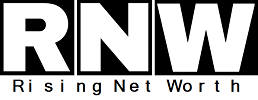Unsightly, uncomfortable, and sometimes embarrassing, cold sores are a prevalent dermatological issue affecting millions globally. These small yet bothersome blisters, alternately called fever blisters or oral herpes, emerge in clusters around the mouth or on the lips, unleashing sensations of tingling, burning, and sometimes outright pain. Despite not posing a threat to life, their appearance can notably disrupt one’s day-to-day life, particularly during physical and emotional outbreaks. This article dives deeper into the world of these pesky blisters, empowering you with knowledge from triggers and symptoms to cold sore treatment options and prevention strategies.
Understanding the Culprit: The Herpes Simplex Virus
The herpes simplex virus (HSV) reigns supreme in the cold sore kingdom. Specifically, HSV-1, distinct from its genital counterpart HSV-2, is the usual suspect behind these lip invaders.
Once you encounter HSV-1, it takes up permanent residence in your nerve cells, lying dormant until reactivated by various triggers. These triggers can be:
Weakened immune system: Stress, illness, lack of sleep, and even sunlight exposure can compromise your immunity, creating an opportunity for the virus to resurface.
Physical trauma: Injury to the lips, like dental work or lip biting, can trigger an outbreak.
Hormonal changes: Menstrual cycles and pregnancy can fluctuate hormone levels, sometimes triggering outbreaks in susceptible individuals. Certain medications, like immunosuppressants, can indirectly contribute to outbreaks.
Recognising the Signs: Symptoms of a Cold Sore Outbreak
The cold sore journey typically unfolds in stages:
Tingling and itching: A tingling, burning, or itching sensation around the mouth is often the first warning sign. This prodromal stage can last a few hours to a day.
Blister formation: Small, clear blisters filled with fluid erupt, usually around the lip line or on the chin. This stage can be quite painful.
Ulceration and crusting: The blisters break open, forming shallow ulcers that may weep fluid. These ulcers then crust over, creating a yellowish scab.
Healing: The scab dries and falls off, revealing new, pink skin underneath. Healing usually takes 7-10 days without intervention.
Battling the Blisters: Treatment Options for Cold Sores
While no cure exists for HSV-1, various treatment options can soothe symptoms, shorten healing time, and even reduce outbreak frequency. Here are some key players:
Over-the-counter (OTC) remedies: Topical creams and ointments containing antiviral agents like docosanol or lidocaine can help numb discomfort and shorten healing time. Zinc oxide creams may also offer some relief.
Prescription medications: Sometimes, your doctor may prescribe antiviral medications for frequent or severe outbreaks. These medications work by interfering with viral replication.
Home remedies: Cold compresses and saltwater rinses can temporarily relieve pain and inflammation. Applying petroleum jelly to prevent crusting and chapping is also helpful.
Beyond the Basics: Additional Treatment Considerations
Light therapy: Low-level laser therapy has shown promise in reducing outbreak duration and severity.
Diet: Some studies suggest certain dietary modifications might impact outbreaks, like reducing arginine intake and increasing lysine intake. However, more research is needed.
Supplements: Taking lysine supplements may offer some benefit, but consult your doctor before starting any new supplements.
Stopping the Spread: Prevention is Key
Since HSV-1 is highly contagious, particularly during the blister stage, preventing outbreaks is crucial to protect yourself and others. Here are some preventive measures:
Avoid close contact: Steer clear of kissing, sharing utensils, or other personal items with someone experiencing an outbreak.
Frequent handwashing: Wash your hands thoroughly and often, especially after touching your face or a cold sore.
Sun protection: Use lip balms with SPF to protect your lips from bad UV rays, a known outbreak trigger.
Manage stress: Stress management techniques like yoga or meditation can help keep your immune system strong and reduce outbreak frequency.
Summing it Up:
Cold sores, although undoubtedly bothersome, are manageable with the right approach. You can effectively take charge and mitigate their impact on your daily life through a comprehensive understanding of their triggers, a keen recognition of the symptoms they present, and an exploration of the diverse cold sore treatment options available. It’s crucial to remember that you’re not alone in facing this challenge – millions of individuals worldwide share similar experiences and struggles with cold sores. If you are grappling with concerns or experiencing persistent outbreaks that disrupt your routine, don’t hesitate to contact your healthcare provider. They can offer tailored assistance and support to help you navigate this aspect of your health journey with confidence and peace of mind. Remember, seeking professional guidance is a proactive step towards managing your cold sores and achieving optimal well-being.







